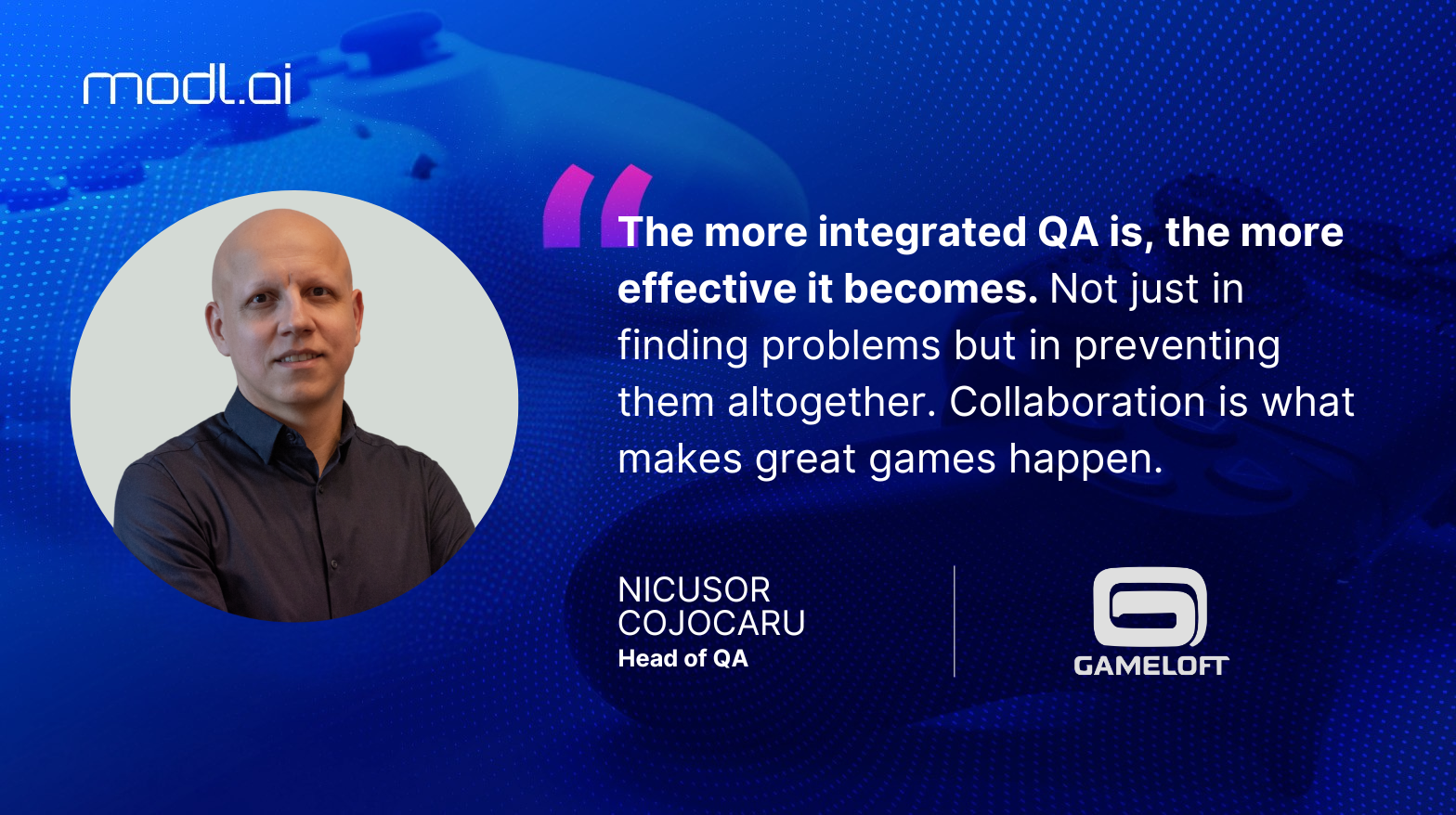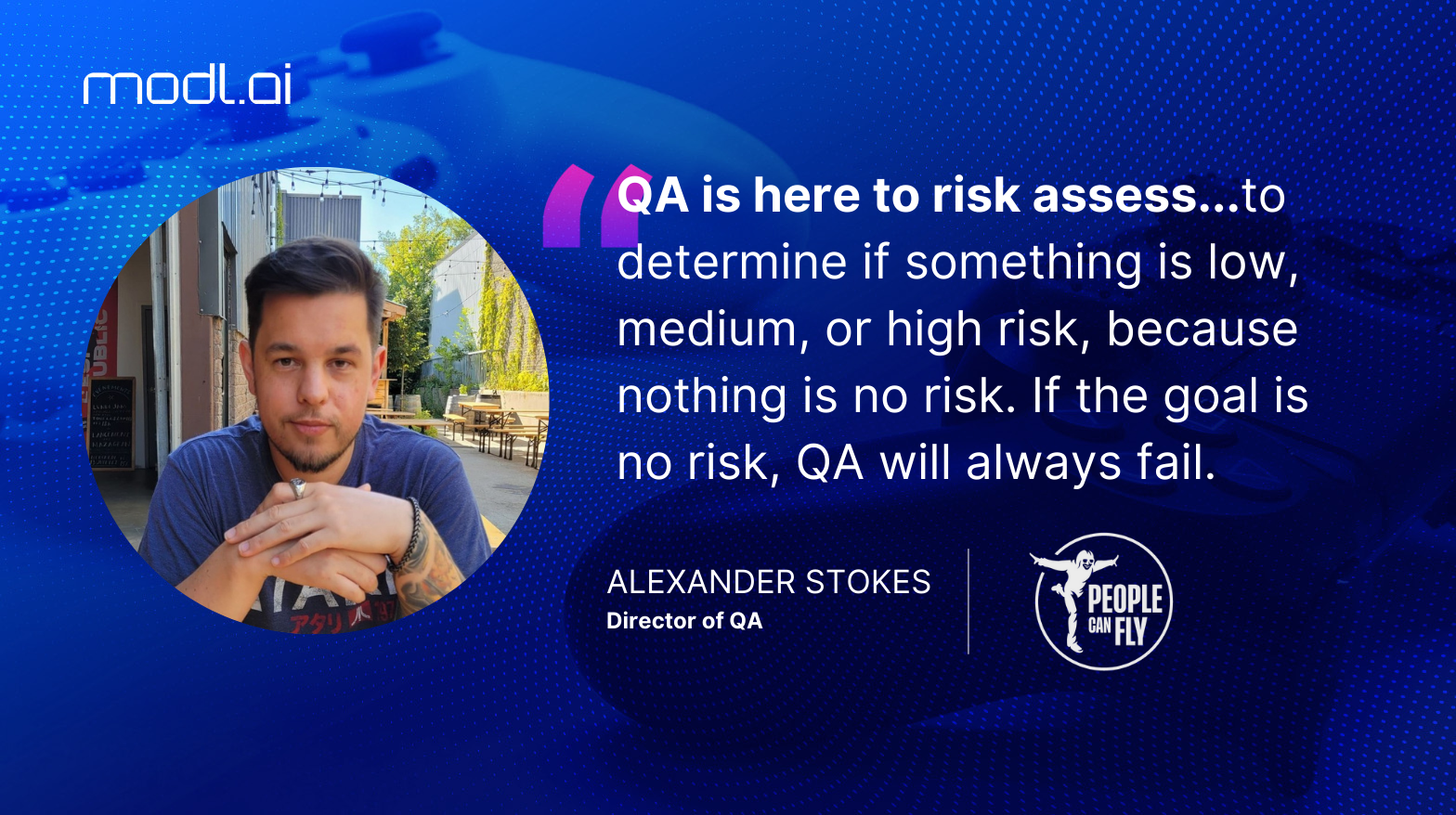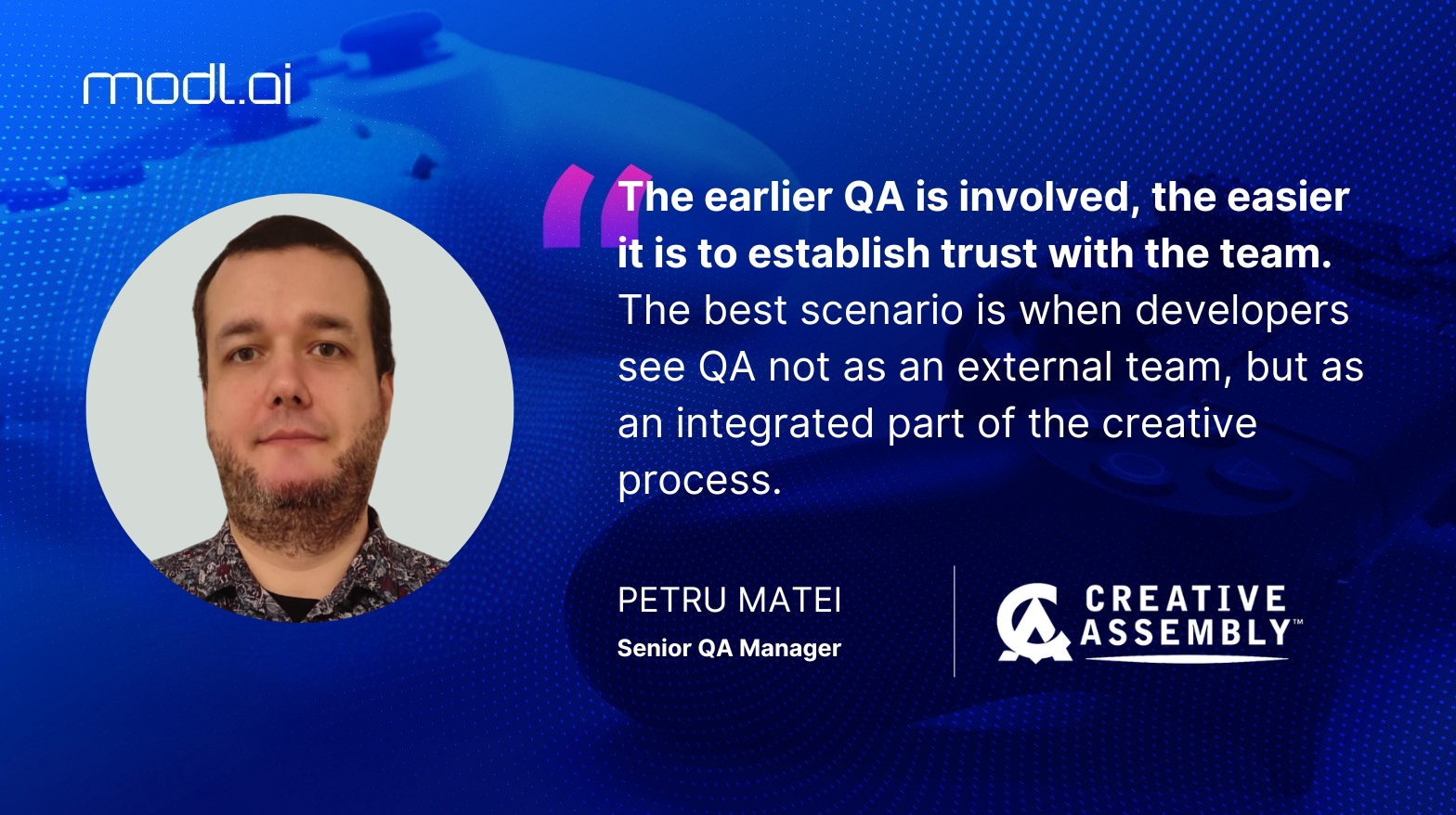Insight | Interview
The Evolving Role of Games QA: Insights from Gameloft’s Nicusor Cojocaru
How quality assurance is shifting from bug detection to a strategic driver of player experience.
April 28, 2025

How quality assurance is shifting from bug detection to a strategic driver of player experience.
Disclaimer: The opinions represented here are those of the individual and do not necessarily represent those of their employer.
With over 20 years in the games industry, Nicusor Cojocaru has built an impressive career in quality assurance. As Head of QA at Gameloft, he oversees global QA operations, driving technical excellence, streamlining testing processes, and ensuring seamless player experiences. Starting as a QA tester in 2004, Cojocaru has witnessed firsthand how the role of QA has evolved from a reactive function to a proactive, strategic driver of game development.
We spoke with Cojocaru about the future of QA, and how it is transforming to meet the demands of live-service games through automation and AI. His perspective highlights key areas where QA professionals can add value: adopting a proactive mindset, integrating continuous QA into live-service models, leveraging automation effectively, improving communication and technical skills, and fostering collaboration between QA and other departments. Watch the full interview below, or read on for a curated selection of key takeaways.
Key Takeaways
- Take a proactive approach to QA by embedding testers early in development and allowing them to influence game design decisions to ensure seamless player experiences from the ground up.
- Integrate QA into live-service game development to maintain ongoing quality, identify emerging issues quickly, and support a smooth player experience through frequent updates and patches.
- Leverage AI and automation to enhance efficiency, automating repetitive tasks while allowing human testers to focus on complex gameplay issues and player behavior analysis.
- Develop strong communication and technical skills to bridge the gap between QA, design, production, and implementation to ensure that testing priorities align with the overall game vision.
- Foster close partnerships between QA and other developers by embedding QA into the creative process, positioning testers as strategic contributors to game quality
Take a proactive approach to QA
QA has been treated as a necessary but reactive function for years, often being brought in toward the end of development to ensure technical polish. However, modern QA teams should have the opportunity to influence design decisions from the outset. By participating early in development, QA professionals can help shape game mechanics, refine difficulty curves, and contribute to a smoother, more engaging player experience. This shift requires a mindset change — QA isn’t just about catching problems; it’s about preventing them before they arise and ensuring that design choices hold up under real-world player interactions.
“QA is becoming more strategic. It’s no longer just about finding bugs but about contributing to game balance, design validation, and overall player experience. In the long run, QA will play an even greater role in data-driven decision-making, understanding player behavior, and identifying pain points before launch. It’s about influencing not just game stability but also game feel and flow. QA can act as a bridge between development and player expectations, ensuring that feedback loops are integrated early. The best QA professionals understand what makes a game fun, what frustrates players, and how to create an experience that feels polished and engaging from day one.”
By leveraging gameplay data, monitoring community insights, and working alongside designers, QA can advocate for design choices that enhance playability. QA teams that immerse themselves in the player perspective can identify usability issues, balance problems, and overlooked friction points before they become major headaches. When QA operates as a strategic partner rather than a last-minute safeguard, studios create games that are not only technically sound but also deeply rewarding to play.
Integrate QA into live-service game development
Live-service games demand an entirely different QA approach than traditional single-release titles. These games are constantly evolving with frequent updates, seasonal content, and ongoing player feedback loops. QA must shift from a one-time, pre-launch function to a continuous process that operates in tandem with development, ensuring that every update meets quality expectations without disrupting the existing gameplay experience.
“With live-service games, QA has to be continuous. We need shorter testing cycles, deeper integration with real-time player feedback, and stronger automation to maintain quality at scale. QA must stay connected with community management, data analytics, and customer support to address live issues quickly. At the same time, we need to find ways to replicate real-world conditions in testing, because we don’t have millions of testers like the player base does. Our role is evolving into one that helps prevent issues rather than just responding to them.”
To succeed in a live-service model, QA teams must adopt agile methodologies, integrate real-time player data into their testing strategies, and work closely with live-ops teams to monitor and resolve in-game issues as they emerge. This proactive approach ensures that quality is maintained across each iteration, ultimately enhancing player retention and satisfaction.
Leverage AI and automation to enhance efficiency
The complexity of modern games requires QA teams to handle an overwhelming number of test cases, making automation and AI essential tools in ensuring thorough coverage. However, while automation can dramatically improve efficiency, it does not replace the human element — rather, it enhances QA teams’ ability to focus on creative and exploratory testing.
“A human tester won’t be replaced by AI, but a tester without AI will be replaced by one who knows how to use it. AI is best used for repetitive tasks, automated playtesting, and analyzing large data sets to predict potential issues. It can simulate thousands of playthroughs, detect balancing problems, and even predict high-risk areas for bugs. But at the end of the day, human testers bring something AI cannot — intuition, creativity, and the ability to break a game in ways that players will. QA is about more than just automation; it’s about combining technology with human expertise to ensure games are not only functional but enjoyable.”
Automation should be leveraged for smoke tests, regression testing, stress testing, and data analysis, while human testers focus on more complex test cases and the player experience. This balance between AI-driven efficiency and human creativity is what will define the future of QA in game development.
With AI-driven tools like modl:test, teams can take this approach even further. Automated bots can continuously test new builds, identifying crashes, performance issues, visual issues, and unintended gameplay behaviors long before they reach human testers. This ensures that QA becomes an accelerator rather than a bottleneck.
Develop strong communication and technical skills
QA teams no longer work in isolation. They are an integral part of the development process, requiring strong communication skills and technical knowledge to be effective. The best QA professionals are those who can clearly articulate issues, offer actionable solutions, and bridge the gap between development and production teams.
“Understanding the game’s design, goals, and the player base is crucial. QA needs to speak the same language as other developers and designers. The best QA professionals don’t just report bugs — they suggest solutions, provide insights, and advocate for better player experiences. They also need to develop technical skills, whether in automation, scripting, or data analysis, to ensure they can work effectively with engineers and designers alike. QA is not just about testing; it’s about improving the entire development process.”
To succeed in modern QA, professionals must become adept at cross-functional collaboration. They must be comfortable with new automation tools, develop an analytical mindset for interpreting player data, and understand the fundamentals of game design. These skills will enable QA teams to contribute more meaningfully to development discussions, making them invaluable assets in any game studio.
Foster close partnerships between QA and development
QA and development teams have historically operated in separate silos, which can lead to inefficiencies and miscommunication. The best studios recognize that embedding QA into the development pipeline with the game team from the very beginning results in higher-quality games and more efficient workflows.
“We shifted from a gatekeeper mentality to a problem-solving mindset. QA isn’t just there to catch mistakes; we’re there to help developers make better games. By embedding QA into early development discussions, teams can proactively identify and resolve potential issues. The more integrated QA is, the more effective it becomes — not just in finding problems but in preventing them altogether. Collaboration is what makes great games happen.”
By fostering a culture of collaboration, QA can provide real-time feedback, help developers anticipate challenges, and ensure that quality is built into the game from the ground up. When QA operates as a true partner rather than a checkpoint, studios create games that are not only technically polished but also engaging and enjoyable for players.
Shaping the future of QA in game development
QA in game development is no longer a backseat function — it’s a driving force in shaping player experiences. By adopting a strategic approach, leveraging automation intelligently, and working closer with game teams, QA professionals can make a tangible impact on game quality and success.
For those looking to stay ahead in the industry, embracing new technologies, refining best practices, and ensuring QA remains a proactive force in development is essential. Follow Nicusor Cojocaru on LinkedIn for more insights into the evolving world of QA in gaming. If you want to augment your QA processes with cutting-edge automation and data-driven insights, contact us at modl.ai today.


